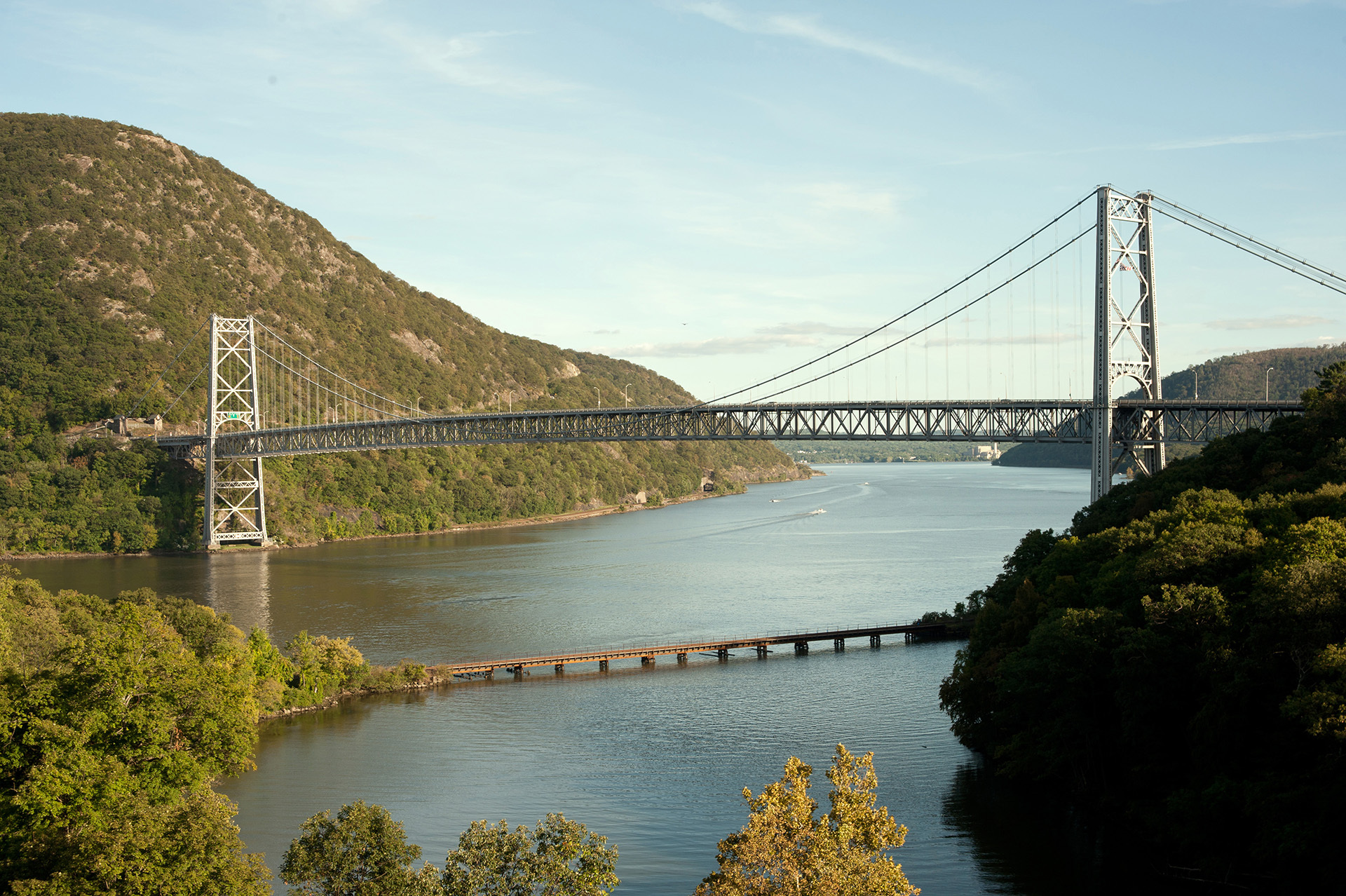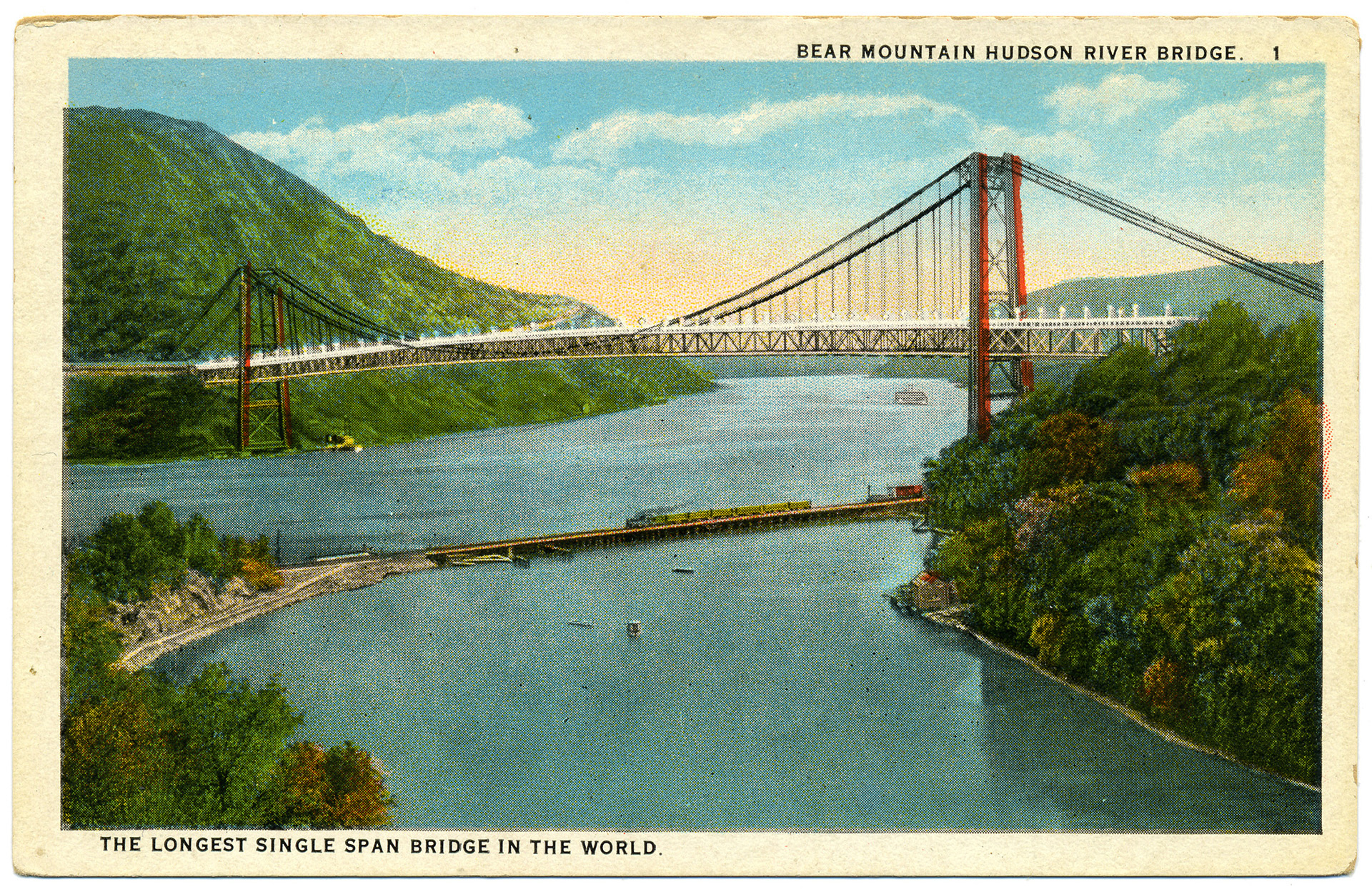Bear Mountain Bridge
Then
Frederick Tench formed the firm of Terry & Tench in 1899; the construction firm erected steel for the Williamsburg, Manhattan, and several Harlem River Bridges. Tench submitted a proposal for a Bear Mountain Bridge to Mary Harriman, widow of Edward Henry Harriman, who owned the land around the Hudson in the area. Tench hired engineer Howard Carter Baird, who had worked on many of the Harlem River Bridges under A.P. Boller.
In 1921, Baird submitted plans to the Harrimans for a suspension bridge with anchorages in the rocks on either side of the river and towers placed on the shoreline; at 1,632 feet, it would be the longest in the world. The Harrimans did not want to pay for the entire bridge, so bonds were raised for the rest and the Bear Mountain Hudson River Bridge Company was formed in 1923. Construction progressed quickly: the towers were complete by April of 1924. Terry & Tench defaulted on its contract to build the bridge, but the firm was reorganized, and work on the bridge was nearly finished by November 1924.

Bear Mountain Bridge, 2010
Now
An opening ceremony was held on the west side of the bridge November 26, 1924. Both Tench and Baird missed the ceremony, though, because Tench’s car stalled on the bridge.
Demand for the bridge was never as high as expected. It generated a profit in its first year of operation, but lost money 13 out of the next 16 years. A charter had been put in place before construction saying that the State of New York could buy the bridge at certain times between 1929 and 1949; if the State did not, it would get the bridge for free in 1954.
Robert Moses, who in 1940 was Chairman of the State Council of Parks wanted the state to buy it but for less than the price was set at; the deal went through in August of that year and the bridge is now operated by the New York State Bridge Authority.
The bridge currently carries two vehicular lanes and two 8-foot-wide pathways for pedestrians and cyclists; the bridge is part of the Appalachian Trail, which runs from Maine to Georgia.
